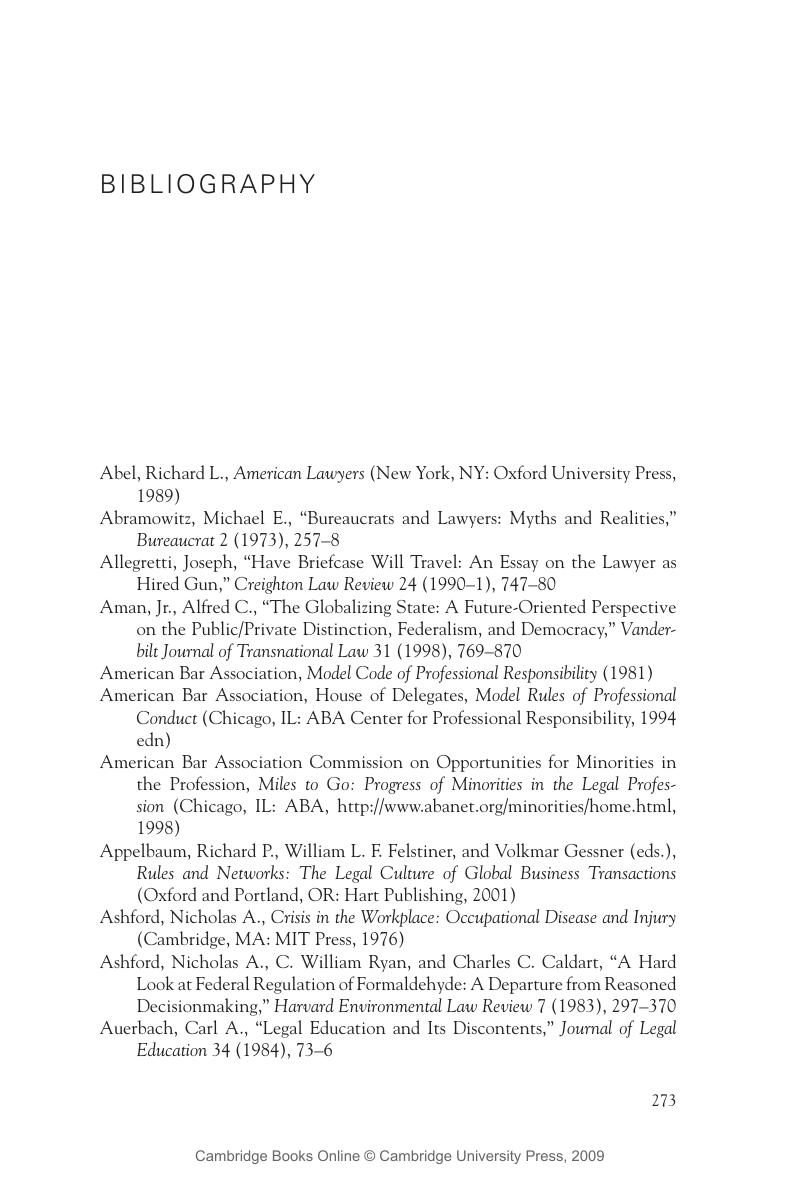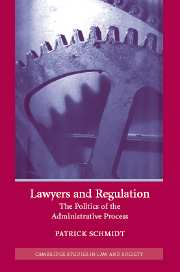Book contents
- Frontmatter
- Contents
- List of figures and tables
- Table of cases
- Acknowledgments
- List of abbreviations
- 1 Introduction
- 2 The contours of a regulatory bar
- 3 Administrative rulemaking
- 4 Rulemaking litigation
- 5 Enforcement
- 6 Regulatory counseling
- 7 Conclusion
- Appendix 1 Research methods
- Appendix 2 Survey instrument
- Notes
- Bibliography
- Index
- References
Bibliography
Published online by Cambridge University Press: 11 July 2009
- Frontmatter
- Contents
- List of figures and tables
- Table of cases
- Acknowledgments
- List of abbreviations
- 1 Introduction
- 2 The contours of a regulatory bar
- 3 Administrative rulemaking
- 4 Rulemaking litigation
- 5 Enforcement
- 6 Regulatory counseling
- 7 Conclusion
- Appendix 1 Research methods
- Appendix 2 Survey instrument
- Notes
- Bibliography
- Index
- References
Summary

- Type
- Chapter
- Information
- Lawyers and RegulationThe Politics of the Administrative Process, pp. 273 - 290Publisher: Cambridge University PressPrint publication year: 2005



